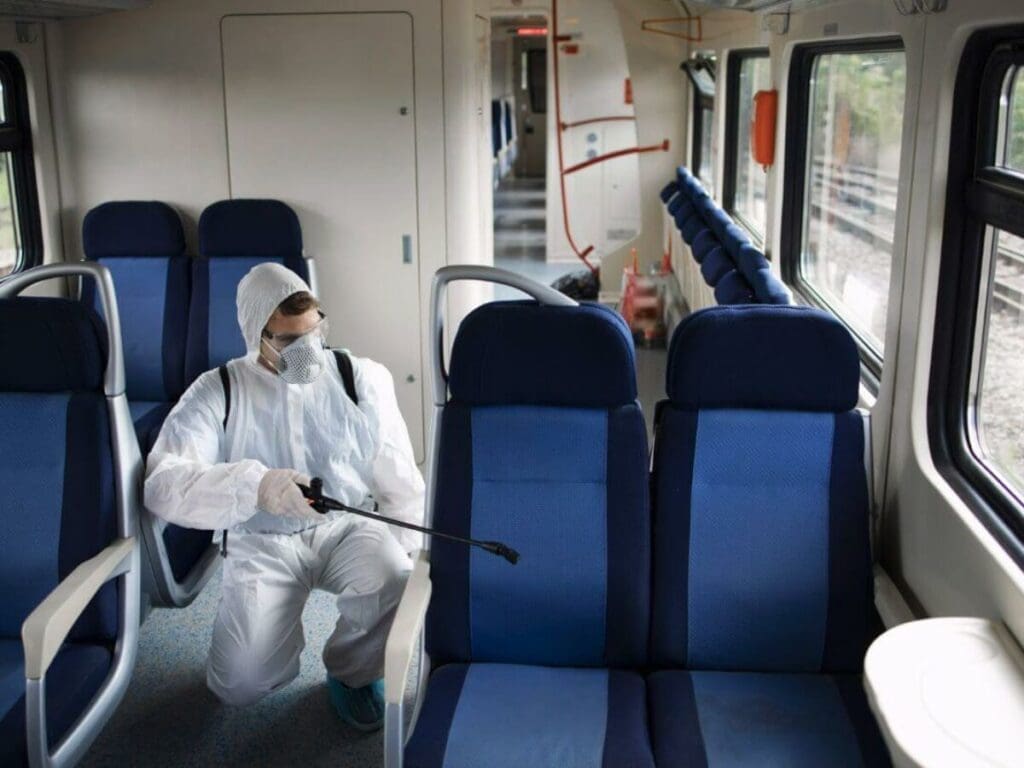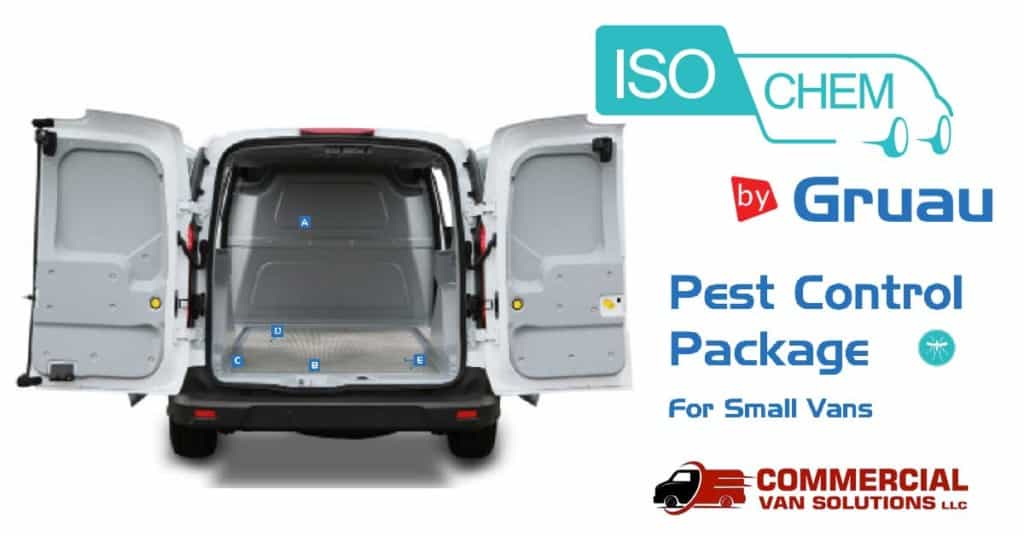If you’ve ever ridden public transportation, you may have noticed some unwelcome passengers joining you on your journey. Yes, we’re talking about pests – those pesky creatures that manage to find their way onto trains, buses, and trams. In this article, we’ll explore the challenges faced by public transport systems when it comes to pest control, and how they can effectively tackle this issue to ensure a clean and pest-free commuting experience for all passengers. Whether it’s rats scurrying around underground tunnels or bed bugs hitching a ride on seats, we’ll uncover the secrets to keeping these unwanted guests at bay. So, fasten your seatbelts as we embark on a pest control adventure in public transport systems!

Types of pests in public transport systems
Rats and mice
Rats and mice are common pests found in public transport systems. They are attracted to the abundance of food sources such as garbage and food spillage. These rodents can cause damage by gnawing through wires and upholstery, and their droppings can spread diseases.
Cockroaches
Cockroaches are another common pest found in public transport systems. They are known for their ability to infest various areas and reproduce quickly. Cockroaches are often found in dark and warm places such as the cracks and crevices of public transport vehicles. They can contaminate food and surfaces with their droppings and shed skin, posing risks to public health.
Bed bugs
Bed bugs are hitchhikers that can easily infest public transport systems. They are small insects that feed on blood and are often found in upholstered seats and other fabric materials. Bed bug infestations can cause discomfort and skin irritations for passengers.
Fleas
Fleas are parasitic insects that can be found in public transport systems, especially those frequented by pets and animals. These tiny insects can bite humans and animals, causing itchy and painful bites. Fleas can also transmit diseases.
Flies
Flies are a common nuisance in public transport systems, especially during warmer months. They are attracted to food and organic waste, and their presence can be both annoying and unhygienic.
Mosquitoes
Mosquitoes can be found in public transport systems, particularly in areas with stagnant water or poor drainage. Their bites can cause irritation and allergic reactions, and they are also known to transmit diseases such as malaria and dengue fever.
Ants
Ants are attracted to food sources and can easily invade public transport vehicles. They can contaminate food and surfaces, and their colonies can be difficult to eradicate once established.
Termites
While less common, termites can still be a problem in public transport systems, particularly in wooden structures. Termites feed on cellulose materials and can cause extensive damage if left unchecked.
Wasps
Wasps are known for their painful stings and can be found in public transport systems, especially during the summer months. Their nests can be a safety concern, as they may build them in hard-to-reach areas.
Spiders
Spiders are often found in public transport systems, particularly in corners and crevices. While most spiders are harmless, their presence can cause fear and discomfort among passengers.
Importance of pest control in public transport systems
Health and hygiene
Maintaining proper pest control in public transport systems is crucial for maintaining the health and hygiene of both passengers and staff. Pests such as rats, mice, cockroaches, and flies can spread diseases and contaminate surfaces and food, posing serious health risks.
Passenger comfort
Effective pest control measures in public transport systems contribute to passenger comfort. Traveling in a safe and pest-free environment ensures a more pleasant experience for passengers, reducing complaints and improving customer satisfaction.
Safety concerns
Pests in public transport systems can pose safety concerns. Rodents, for example, can gnaw through wires and cause electrical malfunctions, increasing the risk of fires. Wasps and mosquitoes can also pose a safety hazard with their painful stings and the potential transmission of diseases.
Common methods of pest control in public transport systems
Chemical treatments
Chemical treatments are commonly used in pest control for public transport systems. Insecticides and rodenticides are applied strategically to eliminate pests. Fumigation can also be used to treat large areas and ensure complete eradication of pests.
Biological control
Biological control methods involve the use of natural enemies to control pests. Predators and parasites that feed on pests are introduced into the environment to reduce their populations. Microbial control, using bacteria or viruses that are harmful to pests, is another form of biological control.
Mechanical control
Mechanical control methods involve physical traps and baits to catch and eliminate pests. Traps can be placed strategically to capture rodents and insects, while baits can attract pests and poison them.
Physical control
Physical control methods focus on using heat treatments, vacuuming, and steam cleaning to eliminate pests. Heat treatments involve exposing infested areas to high temperatures, which can kill pests and their eggs. Vacuuming and steam cleaning are effective methods for removing pests and their eggs from surfaces.
Chemical treatments for pest control
Insecticides
Insecticides are chemicals used to kill insects. They can be applied as sprays, powders, or baits. In public transport systems, insecticides are often used to target pests such as cockroaches, flies, and mosquitoes.
Rodenticides
Rodenticides are chemicals designed to kill rodents, such as rats and mice. They are typically used in bait stations or as baits to attract and eliminate these pests. Rodenticides should be used with caution due to the risks they pose to non-target animals and the environment.
Fumigation
Fumigation is a method of pest control that involves sealing off an area and introducing a gas or fumigant to eliminate pests. This method is often used in public transport systems to treat large areas or when other control methods are not sufficient.

Biological control methods for pest control
Predators and parasites
Predators and parasites are natural enemies of pests and can be used in biological control. For example, introducing parasitic wasps that lay their eggs in pest larvae can significantly reduce their populations. Similarly, introducing natural predators like spiders or ladybugs can help control pests like flies or aphids.
Microbial control
Microbial control involves using microorganisms such as bacteria, viruses, or fungi to control pests. These microorganisms are specific to a particular pest and can be used to infect and kill them. Microbial control methods are often used in public transport systems to target pests like cockroaches and mosquitoes.
Mechanical control methods for pest control
Traps and baits
Traps and baits are commonly used in mechanical control methods. Traps can be set up to catch rodents or insects, while baits can attract pests and poison them. These methods are effective in reducing pest populations in public transport systems.
Exclusion
Exclusion involves sealing off entry points and preventing pests from entering public transport systems. This can be done by repairing cracks and gaps, installing screens or barriers, and ensuring proper door seals. Exclusion methods help prevent pests from infesting the vehicles or facilities.

Physical control methods for pest control
Heat treatment
Heat treatment involves exposing infested areas to high temperatures that can kill pests and their eggs. This method is effective for eliminating pests such as bed bugs and fleas. In public transport systems, heat treatment can be applied to upholstered seats, carpets, and other fabric materials.
Vacuuming
Vacuuming is a physical control method that can effectively remove pests, their eggs, and debris from surfaces. Regular vacuuming in public transport systems can help eliminate pests and prevent their infestation.
Steam cleaning
Steam cleaning is another physical control method that uses high-temperature steam to kill pests and remove their eggs and debris. This method is particularly effective for eliminating pests in hard-to-reach areas or equipment in public transport systems.
Preventive measures for pest control in public transport systems
Effective waste management
Proper waste management is essential in preventing pest infestation. Regularly emptying trash cans, ensuring proper disposal of food waste, and maintaining cleanliness in public transport systems can minimize the attractiveness of these environments to pests.
Regular cleaning and maintenance
Regular cleaning and maintenance are vital for pest control in public transport systems. This includes thorough cleaning of seating areas, floors, and other surfaces, as well as regular inspections for signs of pests. Prompt repairs and maintenance should also be carried out to eliminate potential pest entry points.
Proper ventilation and air circulation
Proper ventilation and air circulation in public transport systems help reduce moisture levels and eliminate favorable conditions for pests. This can be achieved through the installation of ventilation systems, regular air conditioning maintenance, and ensuring good airflow throughout the vehicles or facilities.
Sealing cracks and gaps
Sealing cracks and gaps in public transport systems is crucial for preventing pest entry. Inspecting and repairing any openings in walls, floors, windows, or doors will minimize the chances of pests finding their way into the vehicles or facilities.
Educating staff and passengers
Educating staff and passengers about the importance of pest control and the role they can play in preventing infestations is key. This can include providing information on proper waste disposal, hygiene practices, and reporting any signs of pest activity promptly.

Signs of pest infestation in public transport systems
Droppings and urine stains
Finding droppings or urine stains in public transport vehicles or facilities is a clear indication of pest infestation. Rats, mice, cockroaches, and other pests often leave these behind as they move around.
Nests and burrows
Nests and burrows can be found in hidden areas of public transport systems, such as storage compartments, engine bays, and ventilation systems. These structures are evidence of pest activity and the presence of rodents or insects.
Eggs and eggshells
The discovery of eggs or eggshells indicates the presence of breeding pests. Bed bugs, fleas, and cockroaches, for example, lay eggs in hidden areas of public transport systems, making them difficult to detect without thorough inspections.
Damaged upholstery and wiring
Chewed upholstery, gnawed wires, or damaged insulation are signs of rodent infestation. Rats and mice have a propensity for chewing through materials, and their presence can be damaging to the infrastructure of public transport systems.
Foul odor
A persistent foul odor is often an indication of pest infestation. Certain pests, like rodents and cockroaches, can leave behind an unpleasant smell that is difficult to eliminate without proper pest control measures.
Visible pests
Spotting live insects, rodents, or other pests within public transport systems is the most obvious sign of infestation. Immediate action should be taken to remove and control these pests to prevent further spread and damage.
Steps for conducting pest control in public transport systems
Identify the pest
The first step in conducting pest control in public transport systems is to identify the specific pest(s) causing the infestation. This can be done through visual inspections, identification of droppings or other signs, or by seeking professional assistance.
Assess the extent of infestation
Once the pest(s) have been identified, it is crucial to assess the extent of the infestation. This involves determining the population size, identifying the areas affected, and evaluating the potential risks to passengers and staff.
Choose an appropriate control method
Based on the identified pest(s) and the assessment of the infestation, the next step is to choose the most appropriate control method. This can include chemical treatments, biological control, mechanical control, or physical control methods.
Implement control measures
After selecting the appropriate control method, it is time to implement the necessary measures. This may involve applying insecticides or rodenticides, setting up traps or baits, implementing exclusion measures, or conducting heat treatments or steam cleaning.
Monitor and evaluate the effectiveness
Once the control measures have been implemented, it is essential to monitor and evaluate their effectiveness. Regular inspections should be carried out to check for any signs of pest activity and determine if further actions or adjustments are required.
Take preventive measures
Lastly, preventive measures should be taken to ensure long-term pest control in public transport systems. This includes implementing effective waste management practices, conducting regular cleaning and maintenance, proper ventilation, sealing cracks and gaps, and educating staff and passengers about pest control measures.
By following these steps and implementing effective pest control strategies, public transport systems can maintain a safe, hygienic, and comfortable environment for passengers and staff alike.


I am Randy, the author behind PestControld.com. Drawing from decades of experience, I aim to provide valuable insights, expert advice, and practical recommendations to help you make informed decisions when assessing viable pest control solutions.